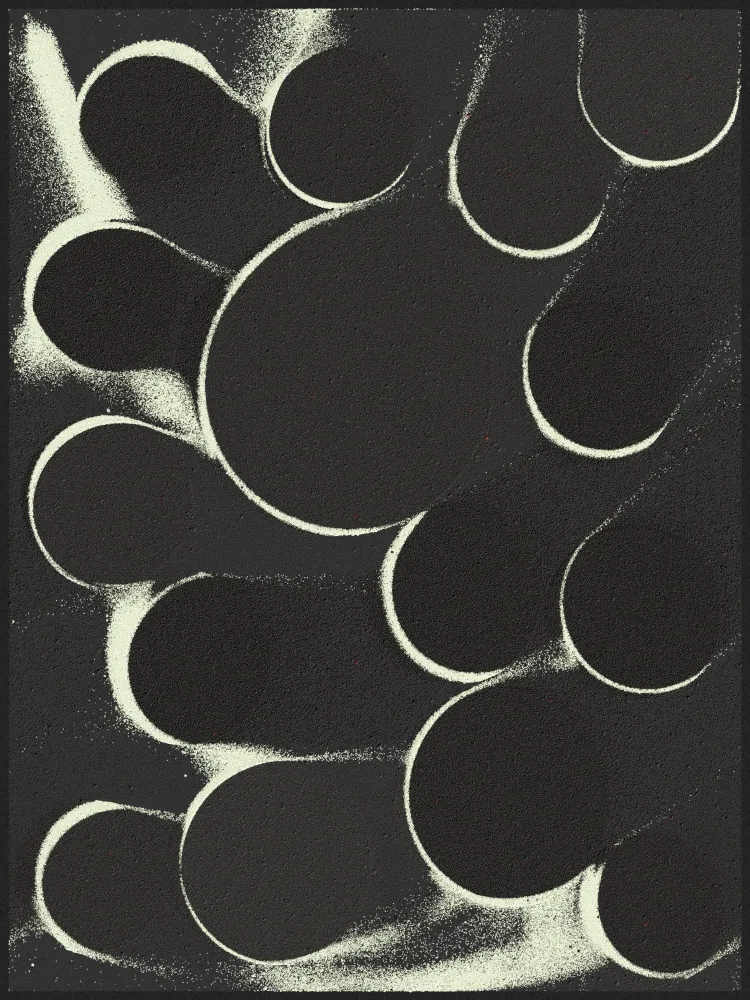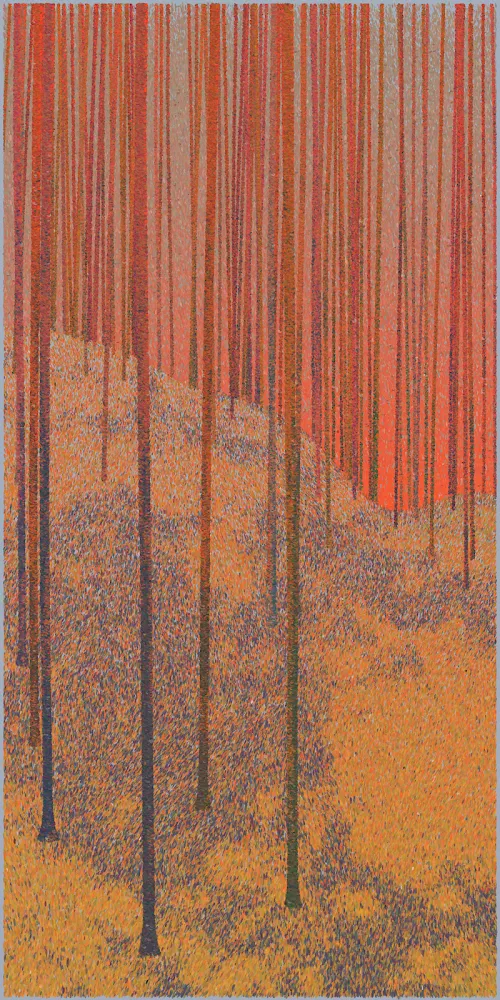Subscribe to get the latest on artists, exhibitions and more.
Drifting into expression, with Paolo Čerić

Lonliboy: How did you land upon the shape direction of squares, rectangles, and circles within Drift?
Paolo Čerić: Choosing the underlying structures in systems like these, along with many other similar decisions, is never a straightforward process for me.
There is always a certain fear that overly developing one dimension of the piece might detract from some other, more important aspect, or lead to over-elaboration. Keeping the underlying shapes relatively simple maintained the right balance of complexity and solidity.

Lonliboy: What does the title Drift signify to you, did you create the series with the title in mind?
Paolo Čerić: It is usually the reverse for me. I tend not to think about the title until the final stages, and I prefer not to choose descriptive titles, to avoid adding too much predetermined meaning. While I recognize a title can guide initial interpretations, I believe in leaving room for more open-ended exploration by the viewer.
Lonliboy: Could you tell us about your previous explorations with particle systems and how Drift builds upon it?
Paolo Čerić: I remember playing around with particle systems back in college, and for a long time, I felt there was this one big hurdle I had to get over to truly unlock what these systems could do.
It turns out, that hurdle was all about shaders and how to effectively utilize them. Though it may sound like a purely technical thing, using shaders made the creative process faster and less constrained for me, and also unlocked other unrelated opportunities
After getting more comfortable with them, my initial experiments were mostly focused on interactive simulations. For one of them, I was really keen to capture it in a still format, which ended up being the Drift project.

Lonliboy: The weight behind the brushstrokes of color within Drift feel extremely natural and expressive, almost as if painted physically - what is your history in art prior to coding?
Paolo Čerić: Other than completing music school, I have no other formal art education. However, thanks to my parents and the presence of painters and a generative artist in my family, I have always been exposed to art.
I've had, and still have, interests in drawing, painting, and many forms of digital art, but am currently focusing primarily on generative works. I find it the most comfortable medium for expressing myself.
Lonliboy: Drift is extremely varied as a long-form generative system, what was the process and thoughts behind creating such an expansive series?
Paolo Čerić: The expansive nature of the Drift series wasn't a deliberate decision. I kept developing it as long as I felt there were new paths to pursue, and halted when it seemed like there was no substantial addition left to be made.

Lonliboy: What do you find in code that fascinates you to use it as a tool in your artistic expression, and in particular in the emulation of natural physical phenomena?
Paolo Čerić: Coding provides me with the right balance between deliberate decisions and unexpected discoveries.
This process is genuinely enjoyable and essentially amounts to an exploration. I start with specific intentions, and these spontaneous occurrences hint at other possibilities. Sometimes I choose to ignore them; other times, I embrace them. This curation is the essence of what I contribute to each piece.
Lonliboy: You've discussed how your uncle Vlatko Čerić is also a digital artist creating with algorithmic techniques, did having artists in the family motivate you to start creating? Are there any works by him that have inspired your practice or specific projects?
Paolo Čerić: Yes, definitely. He introduced me to generative art many years before I knew anything about programming. On one occasion, I remember, he demonstrated a simple script in Mathematica, it drew lines in a circular pattern, subtly offsetting the angles to produce an interweaving pattern. The experience blew my mind, it was the first time I'd seen a computer used in such a way.

He also introduced me to Processing, which subsequently became my primary tool for several years. Regarding my uncle's work, the FORTRAN works from the 70s are probably my favorite, and my Char series drew a lot of inspiration from those pieces. I'm also fond of a particular series from the early 2000s, the Unclassified objects.

In addition, my grandfather (and two cousins) were painters, among other things. As a result, our walls were always filled with their drawings and paintings. Even though my parents aren't artists, they made sure I understood and appreciated art. They always encouraged artistic expression in our household, and for that, I'm truly thankful.
Paolo Čerić
Paolo Čerić (b.1990) is a Zagreb based artist and a programmer.
His interests have always gravitated between science and creative expression, and after being introduced to generative art by his uncle Vlado, he finally felt at home. Expression through generative works enables him to merge his thought processes with the emotions and concepts he aims to convey, and his approach often involves...

